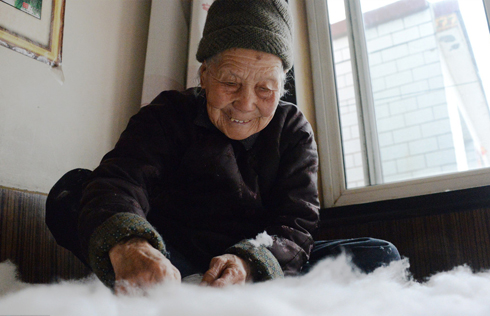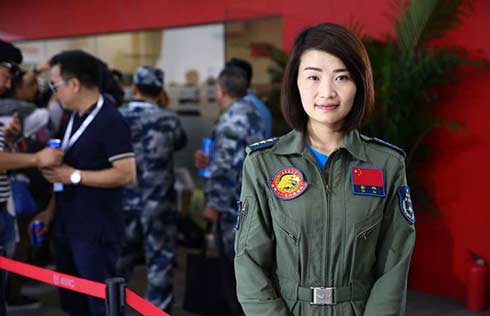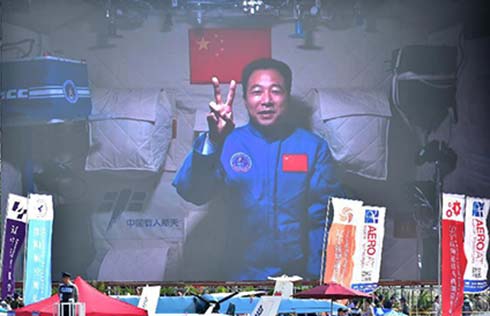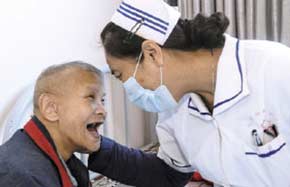86-year-old scientist aims to revolutionize rice planting
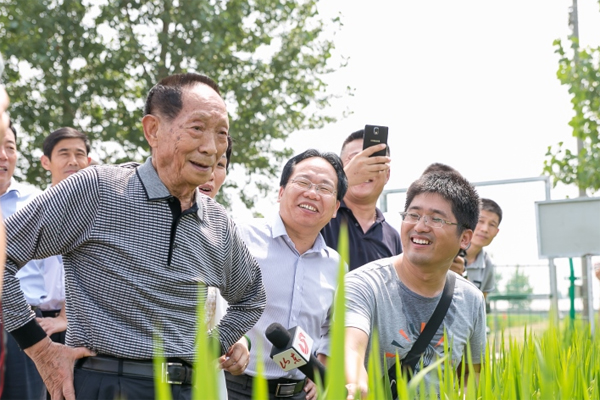 |
|
Yuan Longping, a rice scientist, works in a sea-rice research center in Dongying, Shandong province. [Photo provided to chinadaily.com.cn] |
Developing a new strain of crop is time-consuming. But that doesn't worry 86-year-old Yuan Longping, China's renowned rice scientist.
Yuan has set his sight on next trophy, a seawater rice for full commercial production in five years.
According to Yuan, it takes time for this kind of revolutionary development of new agricultural species to become full-fledged. It will take three years to develop a breed that has commercial value, and would take five years for it to be mass marketed. And to make it popular in China's tidal-flat areas and saline-alkali lands, it would take about 10 years.
He told China Daily in a written reply that by that time, a rice strain grown by his research team will yield up to 4.5 metric ton per hectare, around 60 percent of the yield from the regular paddy fields. And the increment of rise output will be enough to feed 200 million people.
Now and then, here and there across Asia, small news items appear about discovery of some wild rice grown in briny swamps, potentially resistant to diseases and with no need for fertilizer.
But successful development of the discovery into a commercial crop has never hit the headline. So, for Yuan, it's never too late to start his own quest for the glory.
 |
|
A sea-rice research center in Dongying, Shandong province. [Photo provided to chinadaily.com.cn] |
China has plenty of saline-alkaline wasteland and can be put into use when the country's arable land is sparse, Yuan said, adding that more than 13 million hectares of such wasteland could potentially be used for sea-rice farming.
If fully utilized, Yuan said, China can reap an additional 50 million tons of grain.
Under Yuan's directorship, a sea-rice research center will be built in Licang district of Qingdao, Shandong province, where his team will use molecular breeding technologies to develop a sea-rice strain with high photosynthetic efficiency and yield.
With a seed fund of 100 million yuan ($14.77 million), scientists will begin experiments on two hectares of saline-alkaline marshland just north of Jiaozhou Bay in next April, and expect to reap their first harvest in the autumn.
Once the two-billion-yuan R&D center is fully built, Yuan's team will start planting a sea-rice species in 1.33 million hectares of saline-alkaline soil along the coast.
Seawater rice seeds and planting techniques could also be exported to countries in Southeast Asia, which has a total of 20 million hectares of saline-alkaline soil, Yuan said. "Our Qingdao center is likely to help Southeast Asia raise its yearly rice production by 20 million tons," he said.
According to Zhang Guodong, general manager of Yuance Biotech, a partner in Yuan's project, a rice strain that can both thrive on seawater and yield a high output has not yet been reported.
There are overseas institutions reportedly trying to develop seawater rice using genetic technology. But all seem to remain lab attempts thus far, Zhang said.
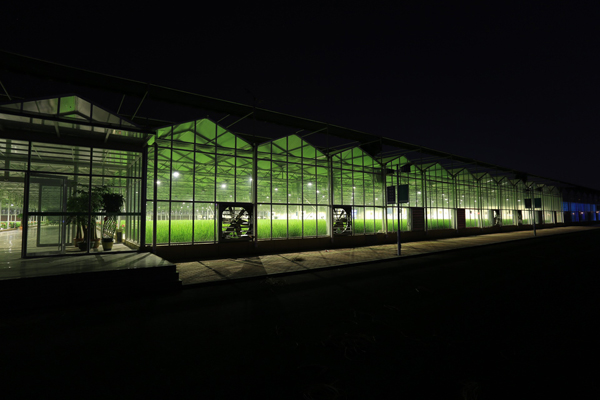 |
|
A sea-rice research center in Dongying, Shandong province. [Photo provided to chinadaily.com.cn] |
- CPC's stricter party governance to give Chinese dream fresh impetus: experts
- Chinese leadership to be more responsive in decision-making: German scholar
- 86-year-old scientist aims to revolutionize rice planting
- Grannies keep Tibetan children warm with hand-made clothes
- Abducted pregnant girl was from Vietnam: police




